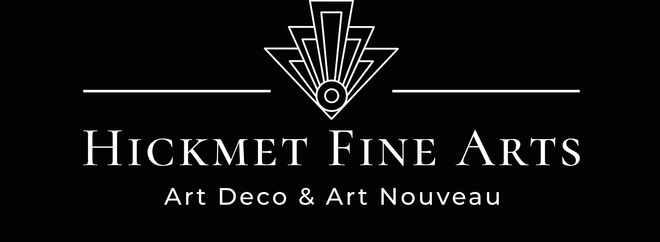An impressive early 20th Century clear glass vase cased in a deep emerald colour and panel cut in an Art Deco decorative style with excellent colour and detail, signed and labelled Val St Lambert
Sorry, this item has been sold. If you would like information about similar items please contact us on 07971850405 or make an enquiry via email here.
ADDITIONAL INFORMATION
Height: 30.5 cm
Condition: Excellent Original Condition
Circa: 1900
Materials: Cut & Cased Glass
SKU: 6635
ABOUT
Val Saint Lambert is a Belgian crystal glassware manufacturer, founded in 1826 and based in Seraing. It has the royal warrant of King Albert II.
In 1825 Kemlin and Lelièvre bought the site of the former Val-Saint-Lambert Abbey in Seraing near Liège on the river Meuse. There they founded a new glassworks (still in operation to this day, originally focused on heavy lead crystal), which initially employed some of the key workers from the former Vonêche glassworks.[1] The two founders initially built two houses for themselves, and block accommodation for the acquired former Vonêche workers. Like similar highly religious employers, this policy of complete lifestyle development eventually led to the company building over 200 houses on the site to house workers, in what became a self-service village which also had a general store, school and post office; the local Roman Catholic church was also expanded to accommodate additional worshippers.
Due to the quality of its designs and manufacturing process, the company developed a well known brand and expanded. Aside from its home territory of Belgium and the Netherlands, the largest export market was to then Tsarist-ruled Russia. In 1876 the company opened a distribution base in New York, and in 1889 the company's CEO visited the store, and toured locally based competitor East Coast factories. As a result, on his return to Belgium the CEO noted in his report the then superior quality of American glass and the skill of its crystal cutters, which the company responded to by developing its own "bright" ranges and superior quality cutting. The resulting "bright period" expanded the companies reputation and market especially in North America, and hence today it is well known and collected there for its Art Nouveau and Art Deco pieces. In 1894 at the world exhibition in Antwerp, the company manufactured an over 2 metres high vase consisting of 82 parts and weighing 200 kilograms, which is still intact and now on display at the Curtius Museum in Liège. As the company became more successful - at its height in the period 1900–1914, it employed over 5,000 workers creating 120,000 pieces of glass per day - the company contracted out work to other factories, latterly either buying them or opening new factories, including: Jemeppe (1883 to 1952); two near Namur (1879 to 1935); and Jambes (1880 to 1931, producing oil glass lamps).
The company stopped producing during World War I, and post-war after the Russian Revolution the market in Russia totally collapsed, resulting in financial difficulties and contraction. Exports to North America saved the company, but again it suffered difficulties with the collapse of that market post the Wall Street Crash of 1929. The company hence closed the Jambes and two Namur factories, and was stable by the time of World War II, during which like most of Belgium the factory was bombed by both the Nazi Luftwaffe and the Allied Air Forces of the RAF and USAAF. Production resumed initially in the less bomb-damaged Jemeppe factory until the production lines could be restored at Seraing, which resulted in the closure of the Jemeppe factory in the 1950s. Whilst many of the buildings at Seraing were restored, a large part of the site remained as was post-WW2 until the early 2000s, when these derelict 19th century buildings were cleared to create the modern steel-framed factory, visitor centre and small factory shop which exist today, together with the original restored 19th century factory offices.












